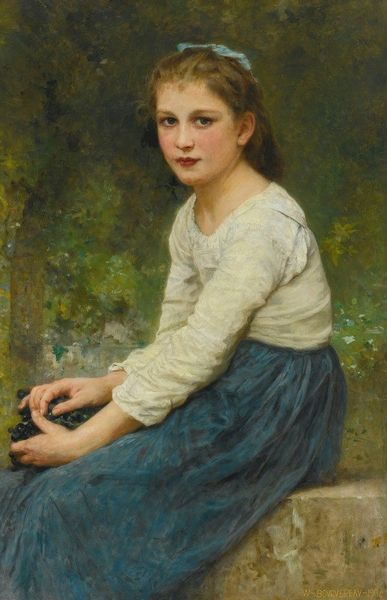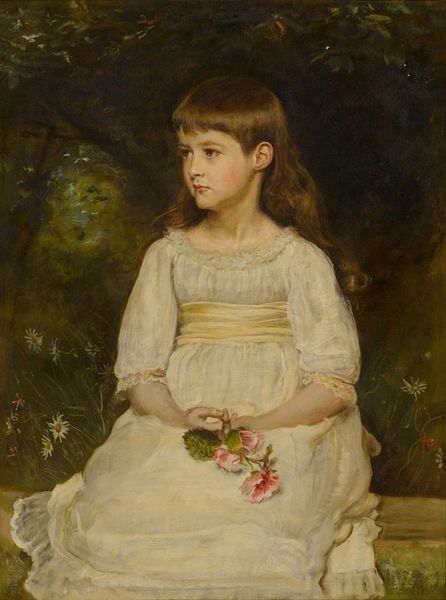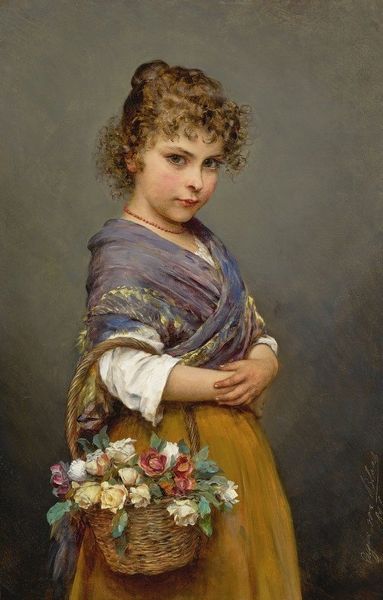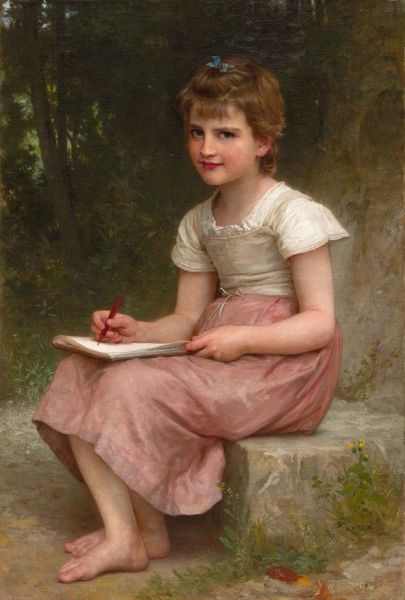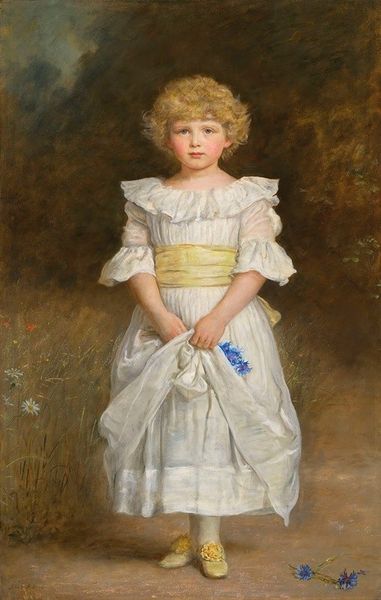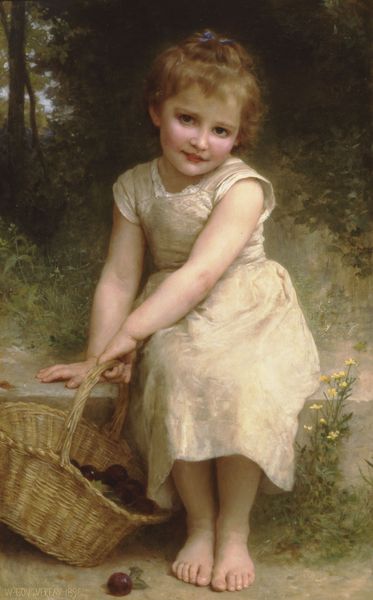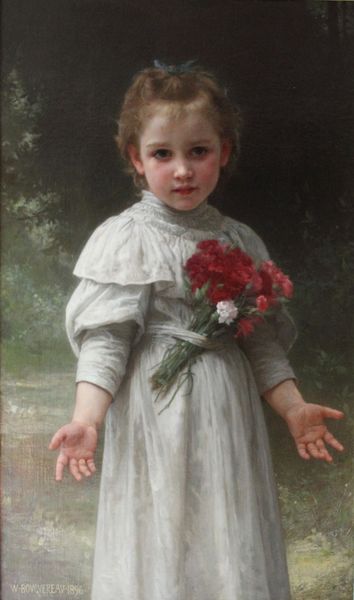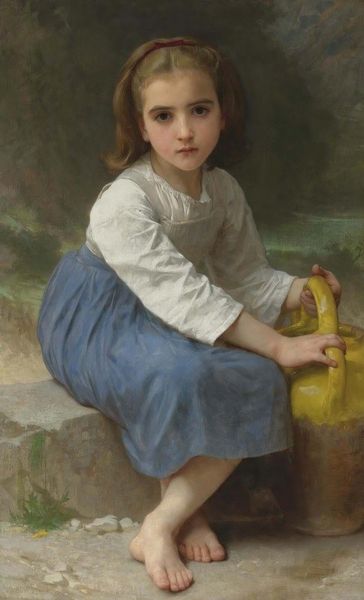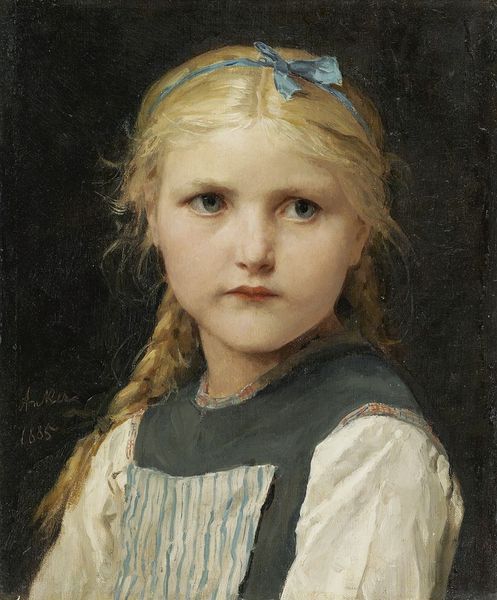
Copyright: Public Domain: Artvee
William Bouguereau painted this vision of youthful innocence, dominated by the motif of the daisy— ‘Pâquerettes’ in French. This flower, seemingly simple, carries a wealth of symbolism. In the Victorian era, daisies signified innocence and purity, often associated with childhood and new beginnings. Notice how the girl holds a single daisy, while a cluster rests beside her, an echo of Flora, the Roman goddess of spring, scattering blossoms to announce renewal. This image resonates with Botticelli's "Primavera," where flowers herald the arrival of spring and rebirth. Yet, the daisy is not merely a symbol of innocence. Its circular form evokes the cyclical nature of life and death, a motif found in ancient Greek and Roman art, reminding us of the ephemeral nature of beauty. Bouguereau, attuned to the psychological currents of his time, taps into our collective memory, stirring feelings of nostalgia, a yearning for the purity of youth, and the poignant awareness of its fleeting nature. The visual weight of the daisies becomes a powerful force, engaging us on a deep, subconscious level, and reminding us of life’s repeating patterns.
Comments
No comments
Be the first to comment and join the conversation on the ultimate creative platform.
